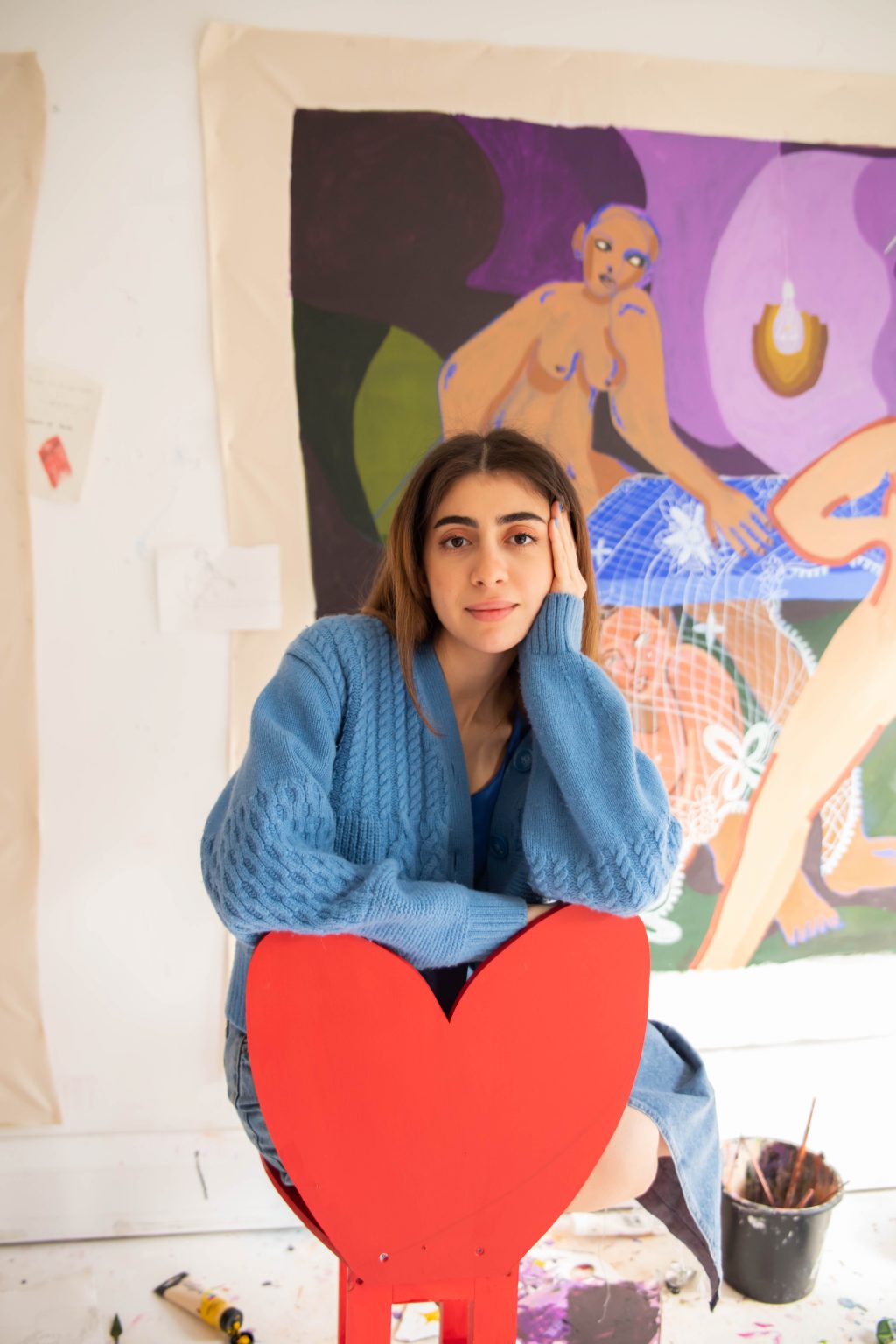
 In Conversation with Mays Al Moosawi
In Conversation with Mays Al Moosawi
Omani visual artist Mays Al Moosawi (b. 1994) talks to Elina Sairanen about her new solo exhibition, You Are Your Own Home taking place at Cromwell Place from 7 to 11 June 2023, organised by An Effort Art Residency and Emergeast, the ideas underlying her practice and the meaning of nude figures dominating her oeuvre. Al Moosawi is currently completing an MFA at the Chelsea College of Art and holds a BA in Animation and Illustration from Coventry University (2017). You Are Your Own Home is her first solo exhibition in London.
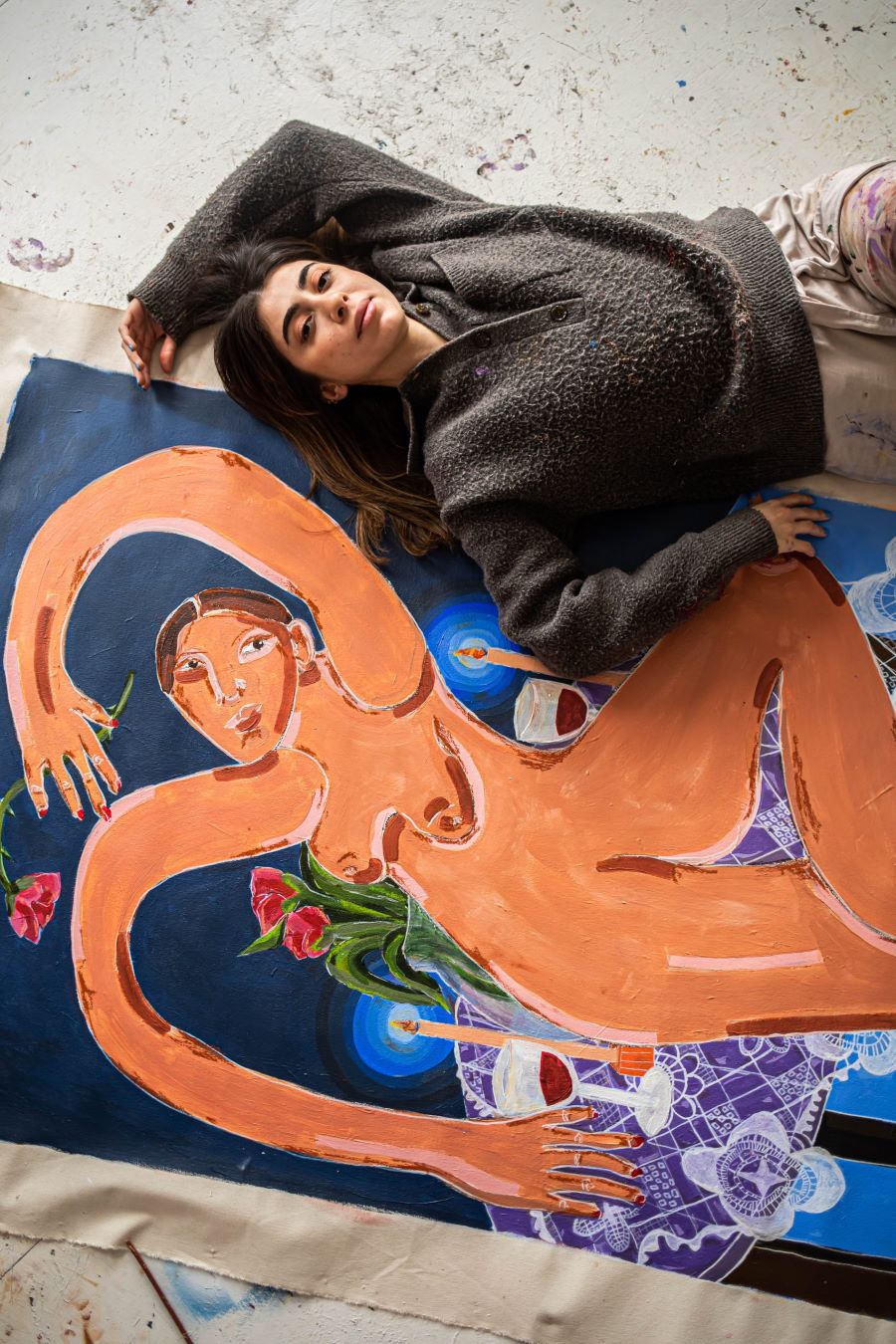

Elina Sairanen: Hello Mays, it is lovely to meet you. To begin, could you introduce yourself to our readers?
Mays Al Moosawi: Thank you and likewise! My name is Mays Al Moosawi and I’m a visual artist from Oman, currently living in London. I moved back to London last autumn to pursue an MFA degree at the Chelsea College of Art.
ES: What were you up to before?
MA: I was living in London from 2013 to 2017 as I was pursuing my Bachelor’s degree in Coventry. I then moved back to Muscat and stayed there until 2022. I always knew I wanted to do a Master’s, but I needed some time to figure out which programme would be the right fit for me. After practising art for five years in Oman I felt the need to learn something new and explore more, that’s when I decided I should pursue an MFA.
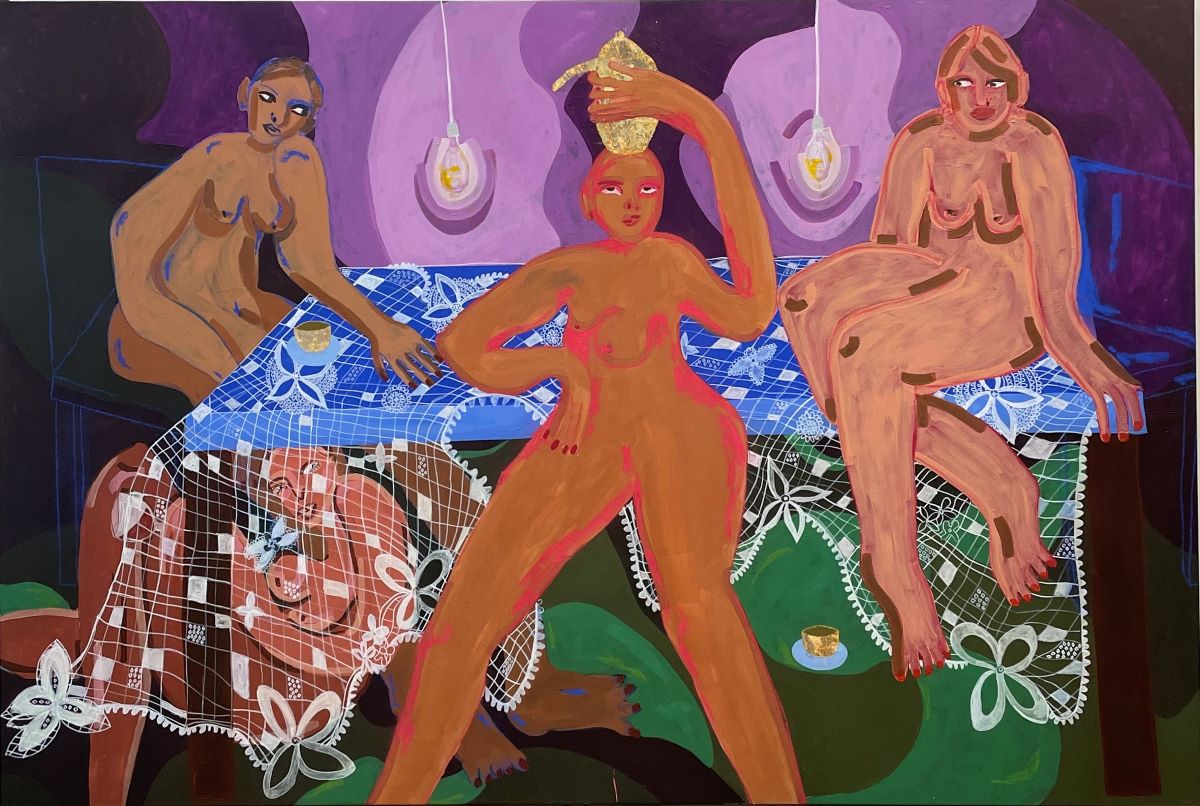

ES: When and how did you decide to pursue art full-time?
MA: I’ve been sketching and painting throughout my entire life. However, I don’t think that there was a specific moment when I made such a decision, it just happened. After my return to Muscat, I worked at an art gallery for a little while. Being surrounded and working with several international artists, seeing the processes surrounding artmaking and the different galleries encouraged me to find a dedicated focus to art producing as a full time career.
ES: Why did you choose to come back to London?
MA: After five years in Oman, I thought it is important to also expand my audience and be exposed to ‘new winds’. I said to my mother that I am perhaps slightly too comfortable here in Muscat and that I need to make some changes in order to push myself further and challenge myself.
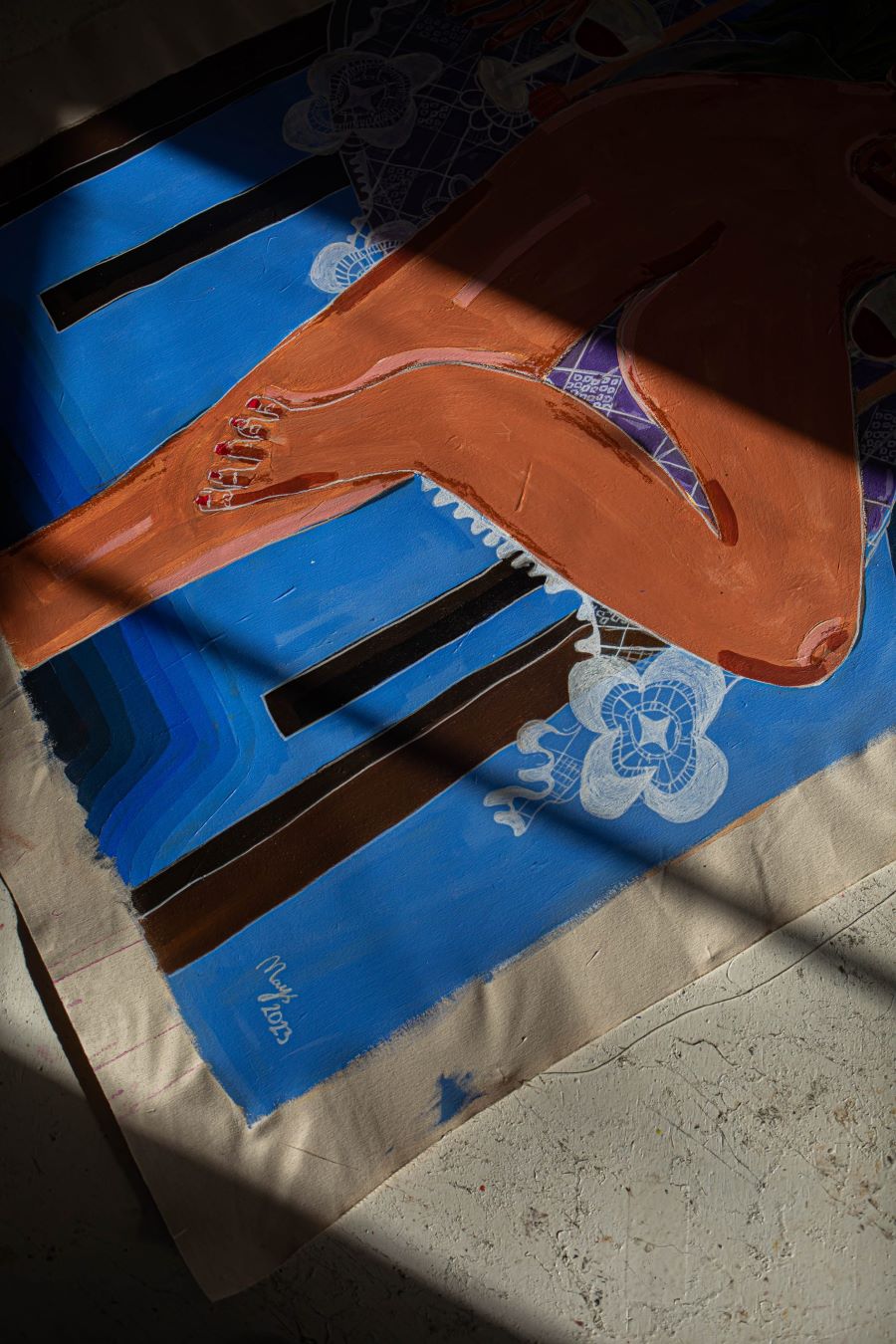

ES: How would you describe your artistic practice?
MA: As an Arab female, growing up I was always surrounded by women: my mother, my grandmother, my aunts. Growing up and listening to their stories and beliefs and insecurities impacted me growing up–they influenced the way I think and the way I am shaped. Through my work, I try to acknowledge these beliefs and ideas. In a way, I am continuously attempting to communicate between the Mays I was back then and the Mays I am currently becoming.
ES: Have there been any changes within your practice since you started?
MA: My practice has changed a lot, definitely. When I started I was not so aware of the reasons why I am painting these women. And frankly, I also painted many different things, too, for instance animals. But once I started to paint figures everything fell into the right place. However, as I just said, in the beginning I did not really comprehend why I was painting these figures, but because it felt so right, I kept going. Nowadays, I am more conscious about my work and the reasons behind focusing on these female figures.


ES: What is the meaning of nudity in your work? Why are the figures nude?
MA: Often in my part of the world the idea of nudity is almost synonymous with sexuality. This is not the case with my work. I don’t find it sexual in any way. Rather, the nudity in my work is natural, reminding us of human nature and the ideas around the concept of authenticity. The nudity has also to do with the concept of timelessness. If the figures were dressed, they would obviously belong to a certain era. With their naked bodies they represent a time that is more difficult, if not impossible, to dissect. Additionally, through nudity I am able to comment on the different phases women go through during their lifetime. Growing up, for example, at certain points we were suggested to wear rather loose clothing in order to fade away our bodily changes–the appearance of breasts and so on. I always disliked this because I thought a pressure of this kind relates and translates to being ashamed of being a woman–in my mind this is nothing to be ashamed of. In this context, the nude figures in my work become acts of embracing and celebrating women.
ES: As you are painting and sculpting nude women, you become part of a long art historical continuum dominated by male artists and their male gaze–unwillingly or not–how do you negotiate your position as a young female artist painting naked figures of women? As we are discussing this, I think it is almost important to point out that female nudes were not only part of Western art history, but are also visible in the work of several Arab artists, for instance Mahmoud Saïd (Egyptian, 1897-1964) and Omar Onsi (Lebanese, 1901-1969).
MA: I have been thinking about this topic a lot recently. I have been inspired by several male artists, for instance Henri Matisse (French, 1869-1954) and Pablo Picasso (Spanish, 1881-1973)–but of course the way they view a woman is very different from female artists painting women. When male artists paint women, the gaze is directed at creating a perfect woman–or rather what they think is ‘a perfect woman’, fitting into their beauty standards. With women painting other women, I think it becomes more of a self-expression, in many ways kinder, more honest and more vulnerable representations.


ES: Do you paint for other women or for yourself?
MA: Mainly for myself but I love it when people connect to my work or see reflections of themselves in my work. After all, we tend to experience similar things in life even though we might not be continuously aware of that.
ES: Who are the women in your work?
MA: In many ways, the women I paint come from or are my memories. Generally, my work explores the connection between the women of my upbringing and myself. Hearing their stories, beliefs and insecurities when growing up, impacted and still impacts my personal journey–starting as a little girl but also still nowadays. While painting, I aim to dig deeper into my emotions, explore my inner thoughts and express my authentic self.
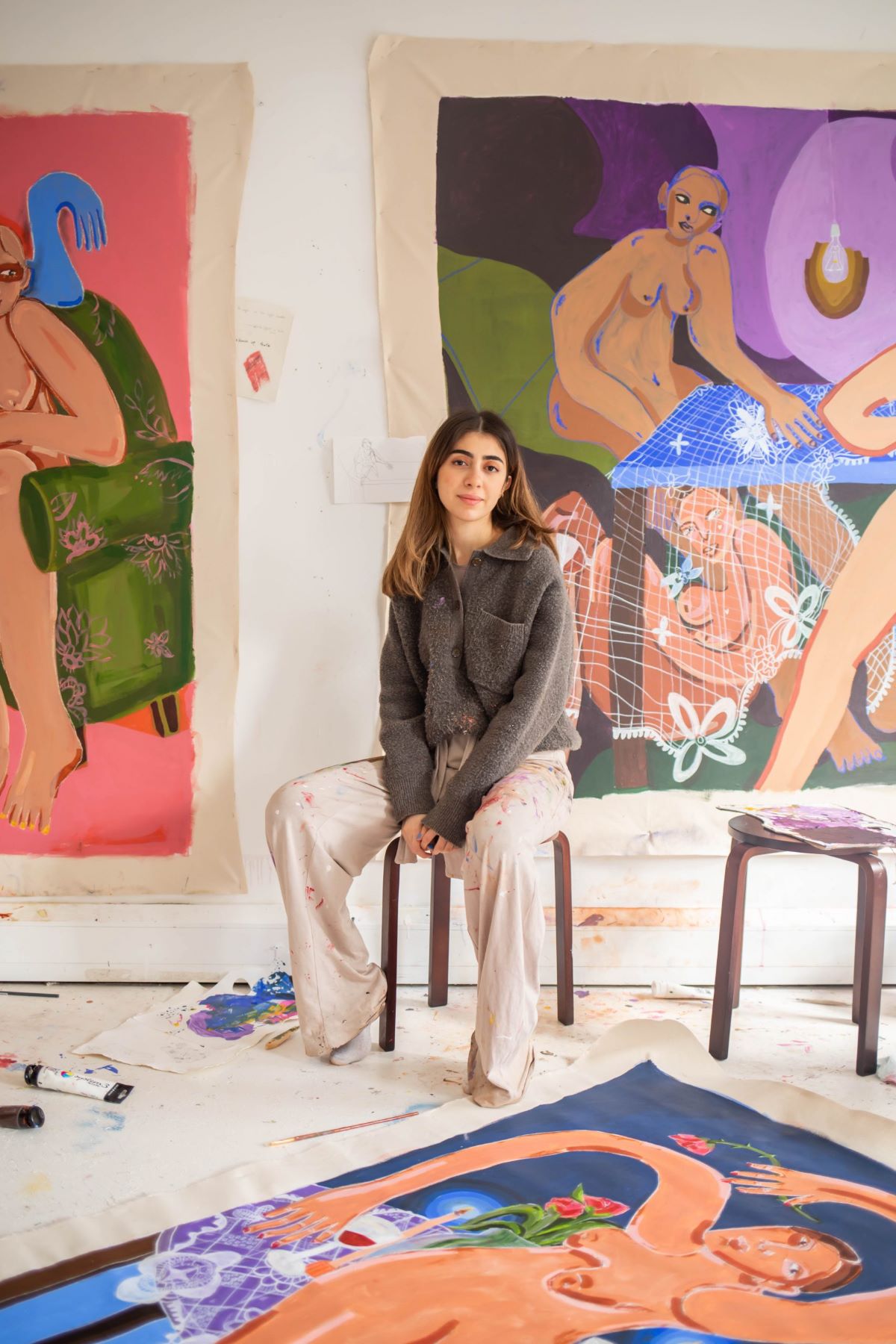

ES: At your MFA you have particularly focused on ceramic sculptures although painting has dominated your practice. As an artist, do you recognise any differences between these two media?
MA: I find them rather similar. The sculptures feel like my paintings but in 3D. I think it is important for an artist to have more than one medium. Personally, I also cannot imagine myself doing the same thing over and over. It is important to both diversify and to take a break and try out new things. With sculpture, I quite enjoy seeing how my figures come to life–I see them as whole. But in terms of the artistic process, for me there is not such a big difference between the two.
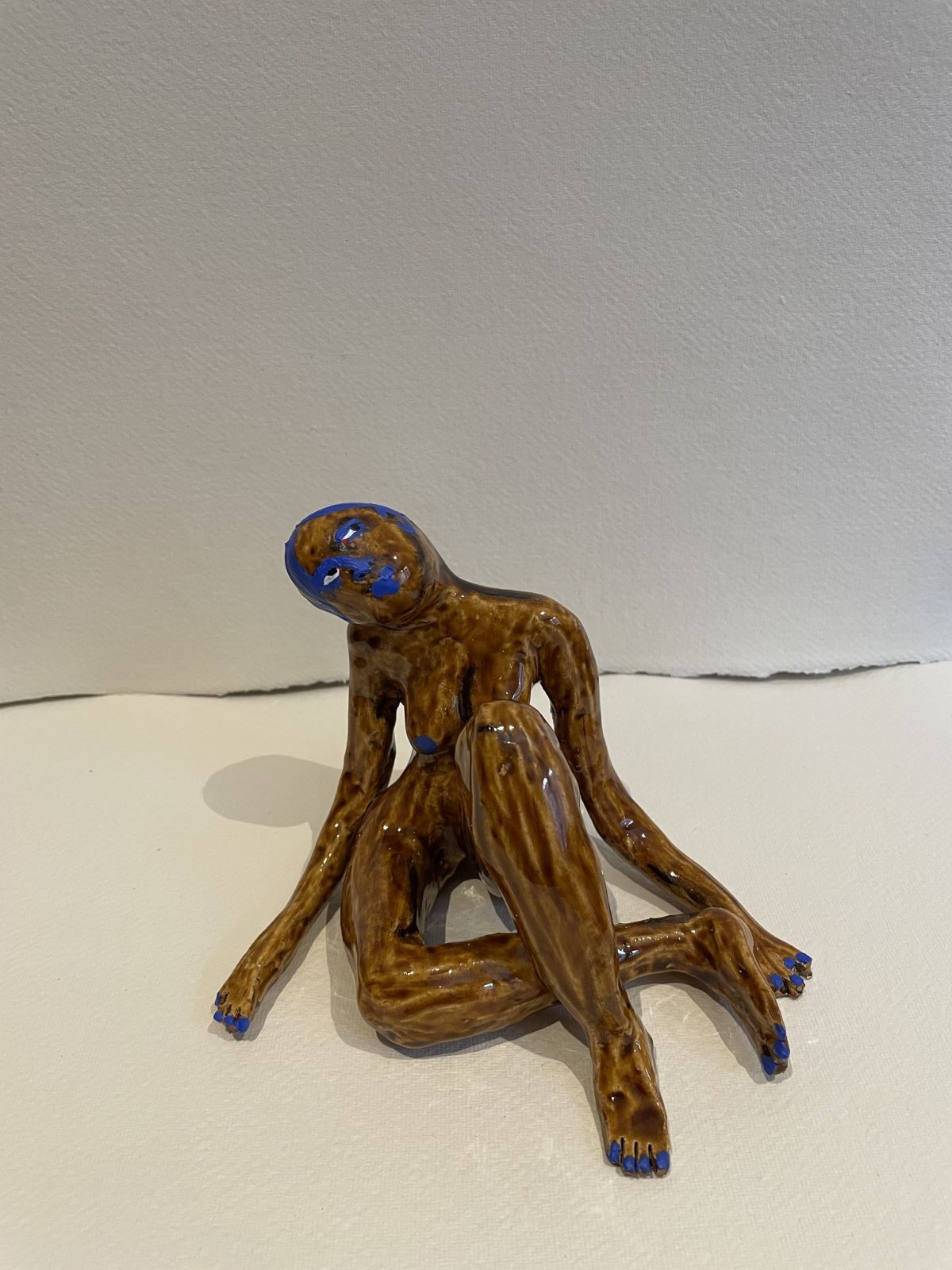

ES: Has your practice changed since you are back in London?
MA: I think the ‘feeling’ of my work is quite dependent on my inner world. Here in London, my figures tend to be slightly freer–you can see a lot more movement in my paintings. Back home in Muscat, I painted women slightly more restricted–they were sitting or standing still more. I suppose the colours have changed too. In Oman, whether by the beach or in the mountains, the sun is always bright, so I used to work with more brown, earthly tones. In London, due to the weather, the colours have changed.
ES: Considering that your work is quite revolutionary–there are very few other artists from the GCC whose work is thematically or aesthetically similar, do you ever find it exhausting to contextualise and explain the meaning(s) in your work?
MA: People automatically assume my work is about challenging regional stigma around women and nudity when in fact my work is an introspective study about my personal identity through my experiences and life so far. Stripping away the conditioning of what society expects, my exploration starts through my characters: who are we without external pressures? When do we feel at home? And with who? It is definitely not an easy subject but one I feel inclined to look at in more detail, with the hope to inspire others to reflect on too.
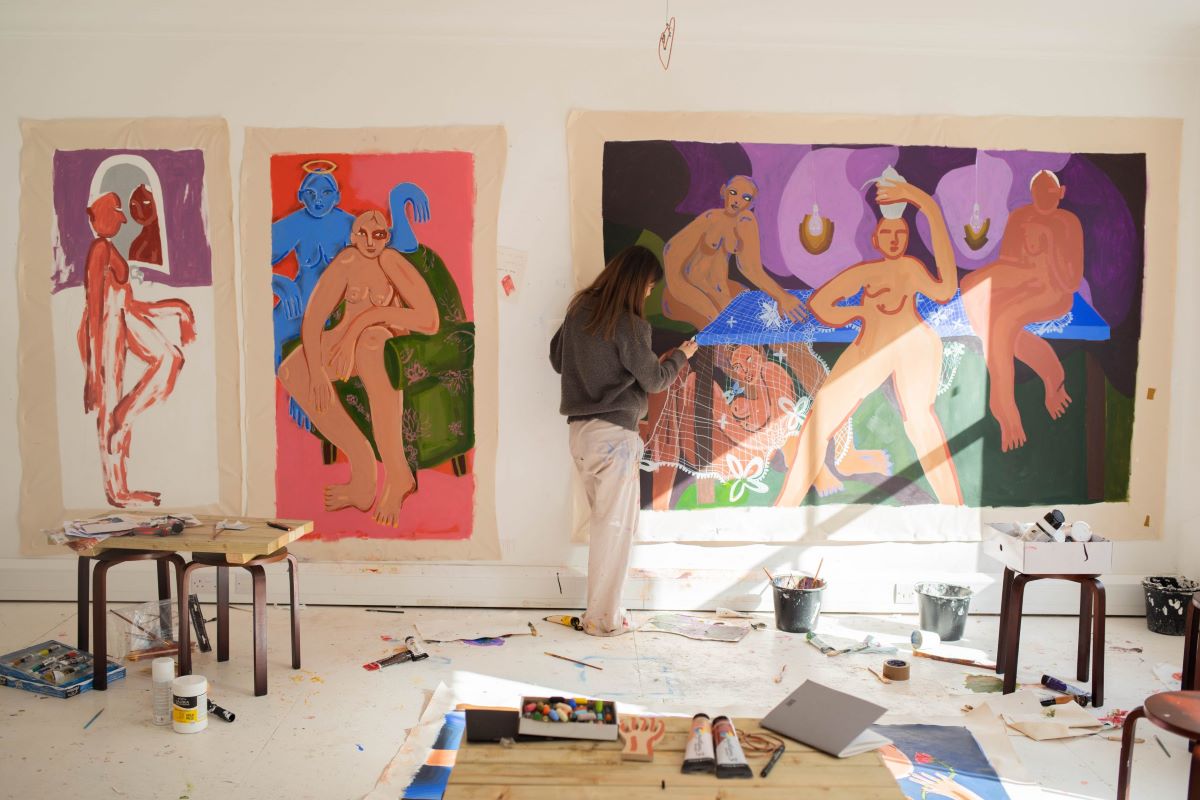

ES: Could you tell us more about your experiences at the An Effort Art Residency?
MA: The residency has been such an amazing opportunity. Having a studio in Soho is truly a dream come true. I started in January and it was quite hectic trying to combine the residency and my Master’s but I’m grateful for the opportunity and happy that I could focus on painting with the residency and explore sculpture during my MFA.
ES: What kind of future plans do you have?
MA: I’m excited about my first solo show in London at Cromwell Place! It’s a big step for my career especially after a few months at the residency. I’m excited to see what comes next.
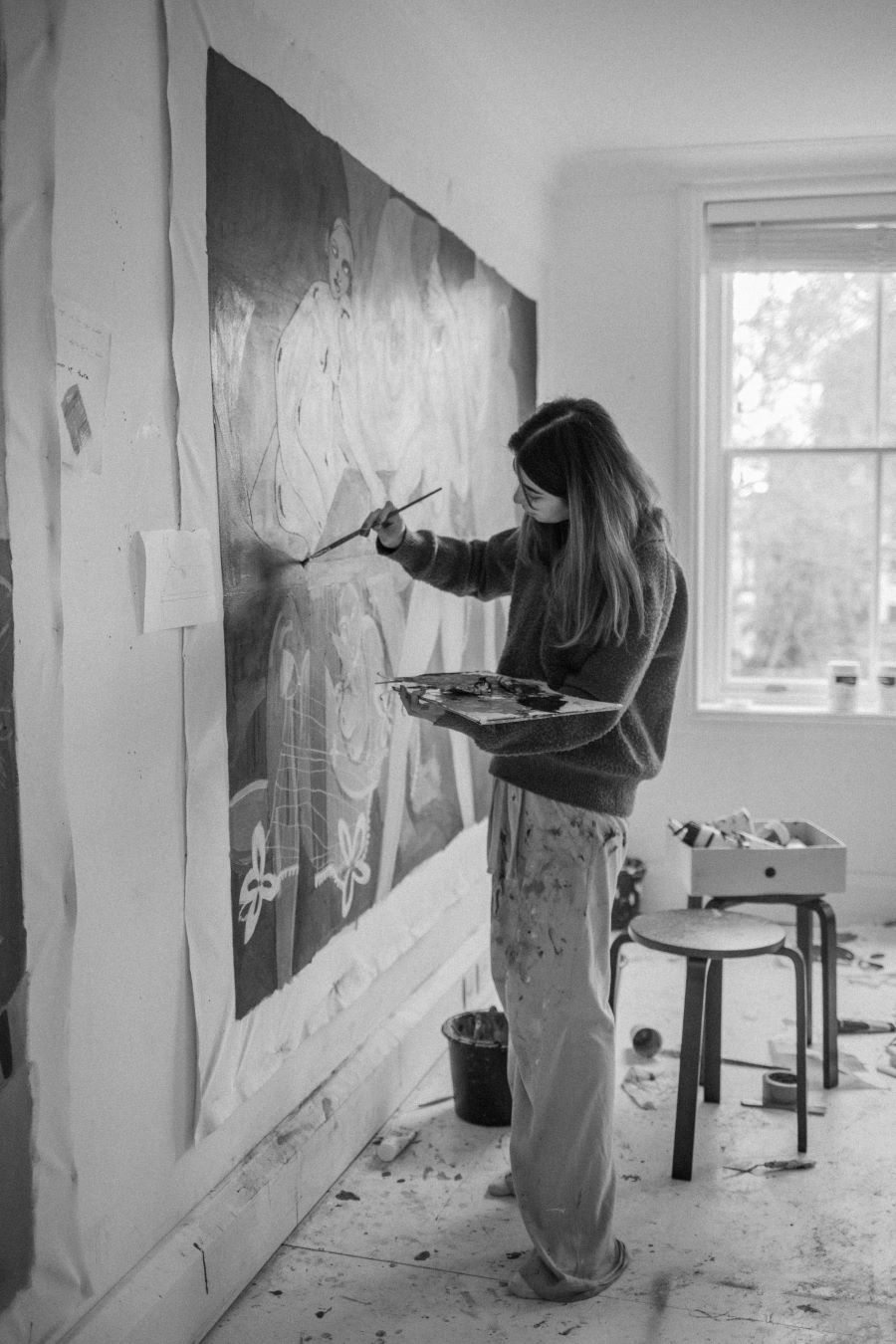

For more information, please see An Effort Art Residency and Emergeast.
Follow Mays Almoosawi here.


 In Conversation with Mays Al Moosawi
In Conversation with Mays Al Moosawi 
